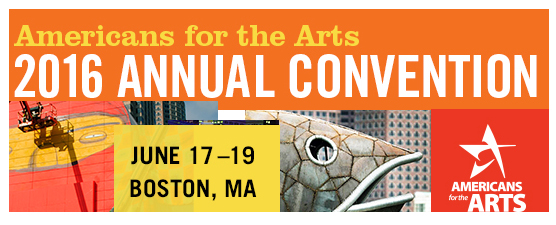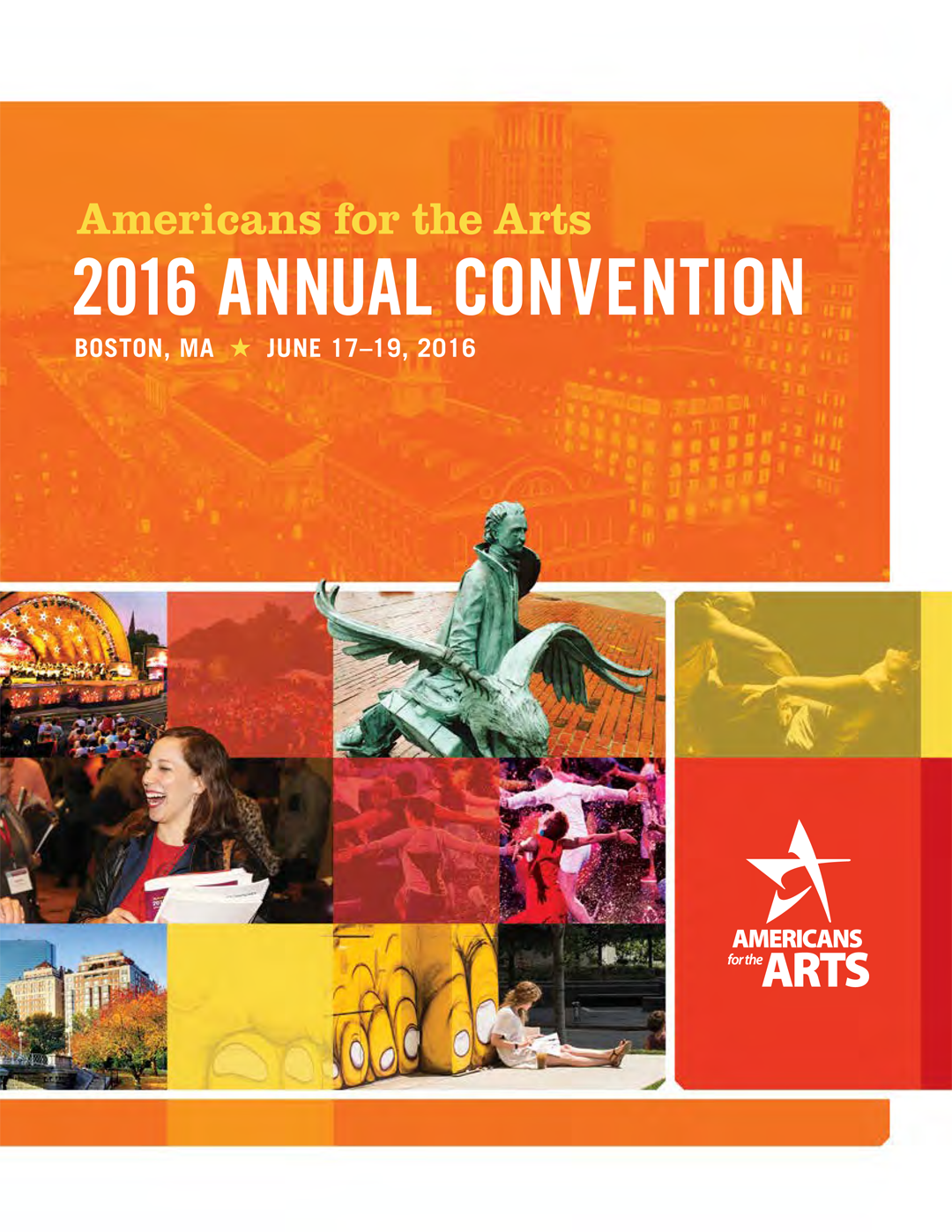For nearly 60 years, Americans for the Arts has convened an annual convention for arts and community leaders to network and discuss strategies for building stronger towns, counties, and cities through the arts. As our professional field has grown, so has this gathering. This year's Annual Convention explored the role of the arts in creating and sustaining healthy, vibrant, equitable communities, and I'm proud to say that New Jersey was definitely in the house! The biggest theme of this year's convention mirrored our own Thrive conference, held on June 2nd, in discussions about diversity and inclusion. The arts are such a diverse field with participants from every race, culture, ethnicity, gender, age, and ability, however, it almost seems that we've forgotten is that diversity needs to be represented on the staff and boards of arts organizations as well. Right now, as our country changes and demographics shift, communities are in flux, it is important to respectfully continue the dialogue. How do organizations expand the executive pipeline? How do organizations speak to new audiences? How can arts organizations reflect the true diverse nature of America? How can organizations embrace a culture of inclusivity without condescension? It is critical that we give ourselves the time and permission to have these potentially painful conversations, and it is absolutely imperative that we take time to simply listen. Another theme of the convention, that I am particularly fond of, is "The Arts AND ......" As a community, the arts are continuously forced to prove their value and, one of the most compelling arguments is that the arts can and do collaborate and support just about any other sector.

So, along with the beneficial economic impact of the arts, arts organizations are natural partners in education, healthcare, veteran and military services, and a multitude of other social services. That tiny little preposition "and" makes a huge difference in how our creative sector moves forward. Too often, during budget seasons, legislators and policy makers see the arts as an added expense, a luxury, a line item that is taking valuable resources from more critical causes, and it is our job to remind them that the argument is never "The Arts OR ...", it is always "The Arts AND ..." The Arts AND Healthcare can address serious issues like mental health and aging, explore the stigma around pain relief and opioid addiction, be utilized in preventative care, and play a pivotal role in palliative and end-of-life care. The Arts AND Education can develop creative leaders, increase empathy, strengthen relationships, and open paths to self-discovery. 
The Arts AND Veteran/Military Services can tackle difficult transitions, ease the symptoms of post-traumatic stress and traumatic brain injury, and allow veterans and active-duty military to cultivate the friendships and relationships they need in times of crisis. The Arts AND Business can revitalize neighborhoods, develop innovative spaces, and re-energize a declining Main Street. The Arts AND Developers/Planning Committees can build beautiful spaces, create wonderfully livable communities, and curate rich cultural landscapes. The list goes on and on, and, for arts organizations and artists, "The Arts AND ..." can open up new revenue streams, provide learning and teaching opportunities, expand visions, and encourage those diverse and inclusive collaborations as our world changes. For an advocacy organization like ArtPride NJ, "The Arts AND ..." is a dream come true. Collaborations between the arts and other sectors open up doors to legislators whose priorities don't always seem aligned with our own. These partnerships allow us to reach across aisles and beyond parties to share moving stories with elected officials who don't normally consider legislation about the arts.
These relationships provide opportunities to highlight the best of the creative sector in a new context. BUT (a slightly more scary tiny little preposition) BUT before you jump on "The Arts AND ..." bandwagon, I encourage you to be sure that you and your organization have the capacity, resources, determination, and passion for this cross-sector work. It is not particularly easy work. With each partner, there is a new vocabulary, a new protocol, a new hurdle ... and a new chance for an incredibly rewarding experience.With each project, there is a shift in priorities, a necessary flexibility, the potential for rejection ... and the potential for inspirational success. While every arts organization and artist is a valuable asset to the community, not all are cut out for "The Arts AND ..." work. And that's OK! Even better than OK, honestly. It is critical to recognize your capacity and accept that some potential collaborations diverge from your mission. That self-reflection ensures that all arts organizations do their best work and be the best that they can be, with necessary resources at their disposal.







